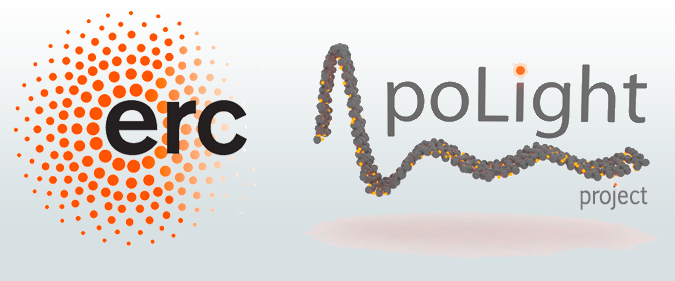 |
Research Professor Istituto Italiano di Tecnologia Milano, Italy annamaria.Petrozza(at)iit.it |
Photophysical versus Structural Properties in Hybrid Lead-Halide Perovskites
Hybrid perovskites represent a new, disruptive, technology in the field of optoelectronics. They have the potential to overcome the performance limits of current technologies and achieving low cost and high integrability. Hybrid halide perovskite, e.g. CH3NH3PbX3 [X = Cl, Br, or I], are usually deposited as polycrystalline thin-films with variable mesoscale morphology depending on the growth conditions. The obtained grain size ranges from tens to thousands of nm. Over the last two years the impressive improvement of photovoltaic performance has been driven by radical empirical evolution of the device architecture and processing methodologies. However, there is a considerable lack of understanding of material properties, both as pristine films and their embodiment in a device.
First, the seminar will focus on the understanding of the relationship between structure and optoelectronic properties of such complex materials, where the presence of various types of interactions and structural disorder play an important role. We will show that the electron-hole interaction is sensitive to the microstructure of the material. We find that by control of the material processing during fabrication, and of the local electric filed during thin film polarization, both free carrier and Wannier excitonic regimes are accessible, with strong implications for optoelectronic devices1,2 In addition, we find that it is also possible to design the emissive properties for a single material composition by designing the processing routs3. By simply tuning the average crystallite dimension in the film from tens of nanometers to a few micrometers, it is possible to tune the optical band gap of the material along with its photoluminescence lifetime. We show that larger crystallites present smaller bandgap and longer lifetime which correlates to a smaller rediative bimolecular recombination coefficient. We also show that they present a higher optical gain, becoming preferred candidates for the realization of lasing devices.
Then, the role of interface engineering4, the effect of ion migration, and interface doping on charge extraction will be elucidated to provide a guideline for the design of hysteresis free solar cells.
Finally, degradation issues as a function of external agents, thin film polarization and local disorder in polycrystalline thin films and single crystals will be discussed.
[1] G. Grancini et al, The Journal of Physical Chemistry Letters, 5, 3836, 2014
[2] G. Grancini et al, Nature Photonics, 2015, just accepted.
[3] V. D’Innocenzo et al, Journal of the American Chemical Society, 136, 17730, 2014
[4] Chen Tao et al, Energy& Enviromental Science, 2015, doi: 10.1039/C5EE01720C
CV
Dr. Annamaria Petrozza was awarded a Master of Science in Electronic Engineering (major in device physics) at Ecole Supèrieure d’Electricité (Paris, France) in 2003 under the T.I.M.E. (Top Industrial Manager in Europe) program. In 2004 she got a Master degree in Electronic Engineering (major in Optoelectronics) at Politecnico of Milan with a thesis carried out at the Cavendish Laboratory of the University of Cambridge (UK) on the optical characterisation of a class of organic semiconductors with a supramolecular architecture for Organic Light Emitting Diodes. The research work was under the supervision of Prof. C. Cacialli and Prof. C. Silva. In 2008 she received her PhD in Physics from the University of Cambridge (UK) with a thesis on the study of optoelectronic processes at organic and hybrid semiconductors interfaces under the supervision of Dr. J.S. Kim and Prof Sir R.H. Friend. From July 2008 to December 2009 she worked as research scientist at the Sharp Laboratories of Europe, Ltd on the development of new market competitive solar cell technologies (Dye Sensitized Solar cells/Colloidal Quantum Dots Sensitized Solar cells). Her main tasks were to establish key needs of PV market, write research proposals to submit to the Sharp Business Group, and design and implement experiments. In January 2010 she got a team leader position at the Center for Nano Science and Technology(CNST) of Istituto Italiano di Tecnologia (IIT). She was in charge of the development of solution processable optoelectronic devices and their characterization by time-resolved and cw Photoinduced Absorption Spectroscopy, Time-resolved Photoluminescence and electrical measurements. Since October 2013 she holds a Tenure Track Research Scientist position at IIT. Her research work mainly aims to shed light on interfacial optoelectronic mechanisms, which are fundamental for the optimization of operational processes, with the goal of improving device efficiency and stability.


